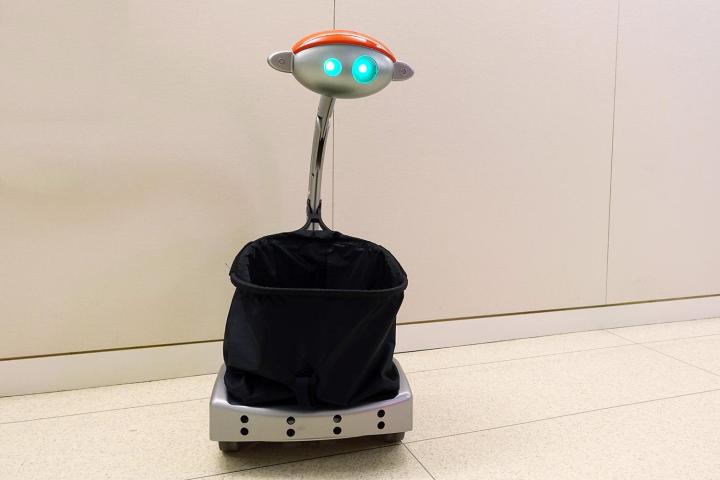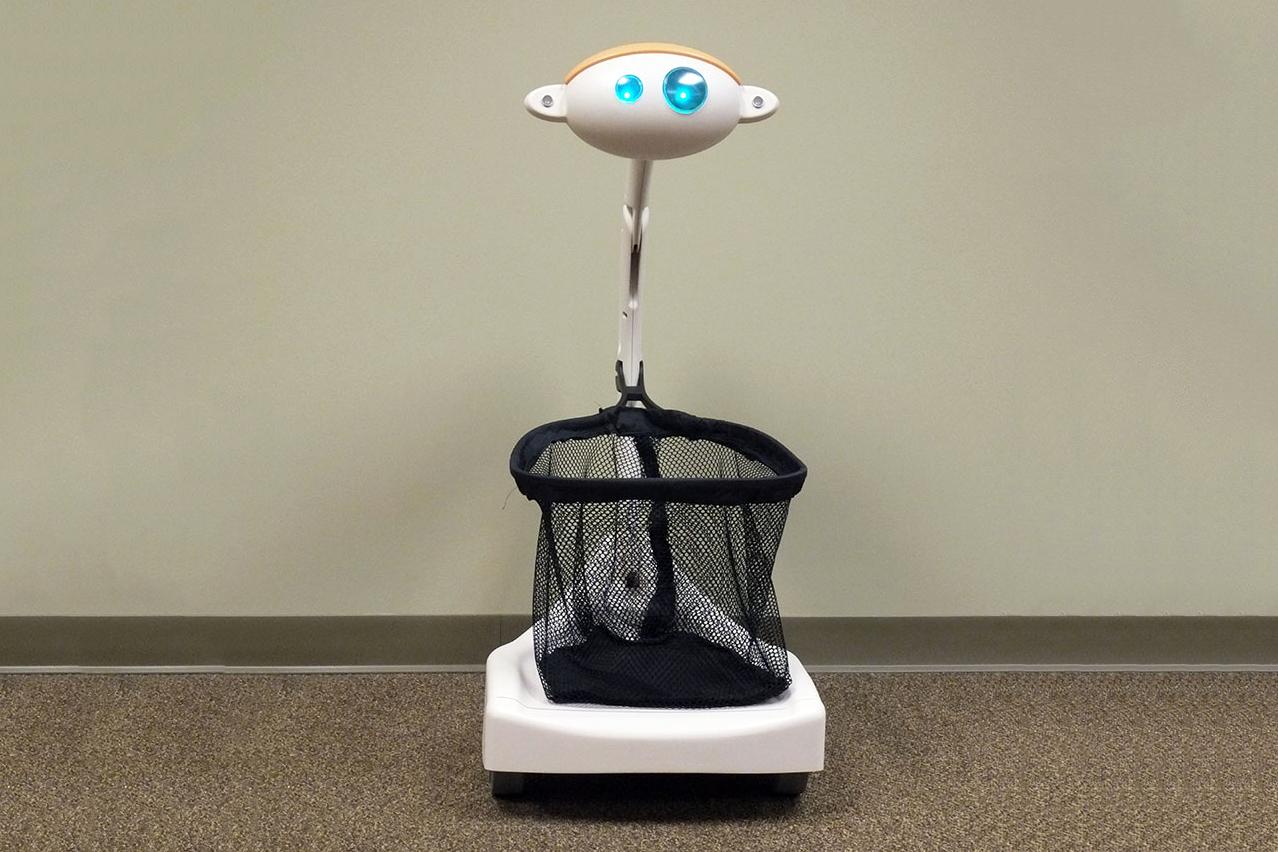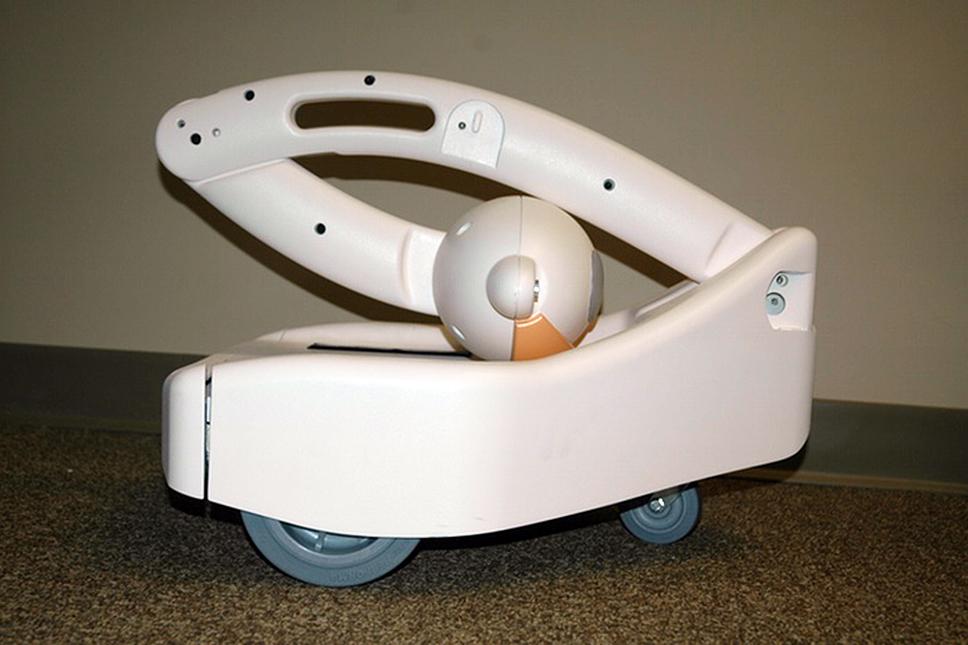
Budgee, as the basketed bot is known, just can’t get a following in America. “I think in the U.S., we’re still thinking it’s something of the future, a Jetsons kind of thing,” 5 Elements Robotics CEO Wendy Roberts tells Digital Trends. “To me, all of the technologies that are needed to create useful robots that can do useful functions, they’re there now.”
Roberts has been putting those components together since founding the company in 2012. Predicting that sequestration would dry up most of the funding at her other company, Future Skies, she decided to pursue her interest in robotics, while still keeping her employees working. Though 5 Elements has pursued a few government contracts, Budgee is mostly meant to be a commercial endeavor.
“The idea would be that people would be able to have a robot in their home,” says Roberts. “It would be something that’s friendly, cute, something that they could develop a bond with.” In order to foster those fuzzy feelings, Budgee is designed to evoke emotion, with different-sized eyes and an unintimidating stature. Sensor-filled “ears” stick out from the sides of its head. It’s designed to be easy to use and serve one function: carry around people’s belongings, up to 50 pounds’ worth.
Related: This robot can be programmed to fold your laundry or get you a beer
Though Roberts decided to manufacture Budgee after a particularly exhausting shopping trip — and it can roll along sidewalks and fold up to fit in cars — the 20-pound robot would probably be most helpful to the elderly or handicapped. Users clip a keychain-sized transceiver to a belt or the back of a wheelchair; when Budgee is in “follow” mode, it can pick up the signal, as long as it’s facing him. And as long as you don’t travel faster than 2.4 miles per hour. “If you start running, you’ll probably lose him,” says Roberts. In “manual” mode, users can control the bot from a smartphone app, and the company is developing a joystick-like device as well.
Despite its consumer targeting, Budgee is getting some commercial interest. A library wants its librarians to be able to put books in the robot’s basket, which has recently been upgraded from mesh to an opaque material that won’t put your goods on display. Postal workers in Denmark may soon lighten their load with Budgee. Malls in China envision shoppers renting out Budgee to help carry their bags. Roberts has distributors from all over the world who want to sell the bot in their countries. Not in the U.S., though. Roberts has to be the one to call them.
Yet 5 Elements is working with other robotics companies and researchers. The University of Maryland is using Budgee as a platform for its object-recognition software. Meanwhile, Chatten Telefactor Robotics wants to outfit the robot with arms. Put all those pieces together, and Roberts thinks the military could use Budgee in situations — areas with poisonous gas, enemy fire, or radiation — to do object retrieval.
For now, though, Budgee is still a simple bot that performs a simple function. At $1,400, Budgee certainly isn’t in everyone’s budget, though Roberts hopes one day people who would benefit from Budgee most would be able to get Medicaid discounts.
As for the U.S. market, Roberts thinks that once people see others with their own personal robot rolling behind them, Budgee will start to catch on. “They’ll want to keep up with the Joneses,” she says. Or keep up with the Jetsons.
Editors' Recommendations
- Hyundai’s new MobED robot can carry booze and babies
- Why won’t my Roomba charge? Tips to fix your robot vacuum
- The Litter-Robot 3 Connect saves time, but makes me miss my cats’ poops
- How a robot vacuum changed my life for the better
- Robot helps a surgeon carry out world’s first long-distance heart operations




